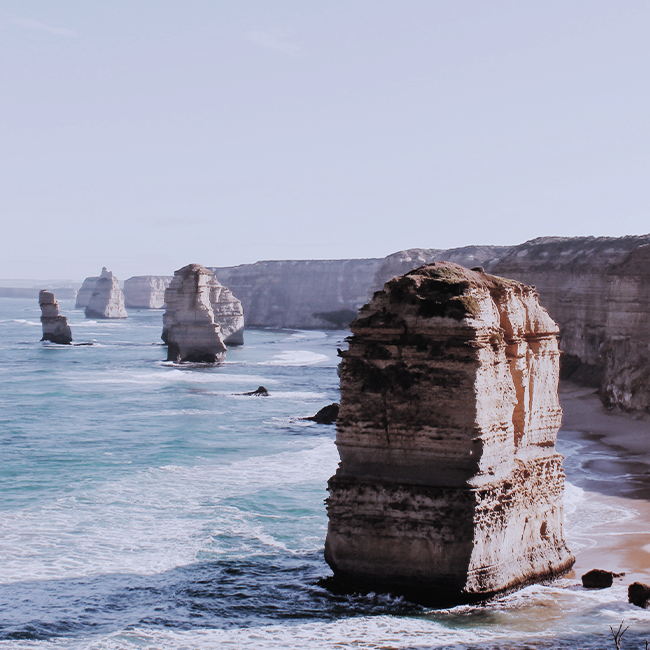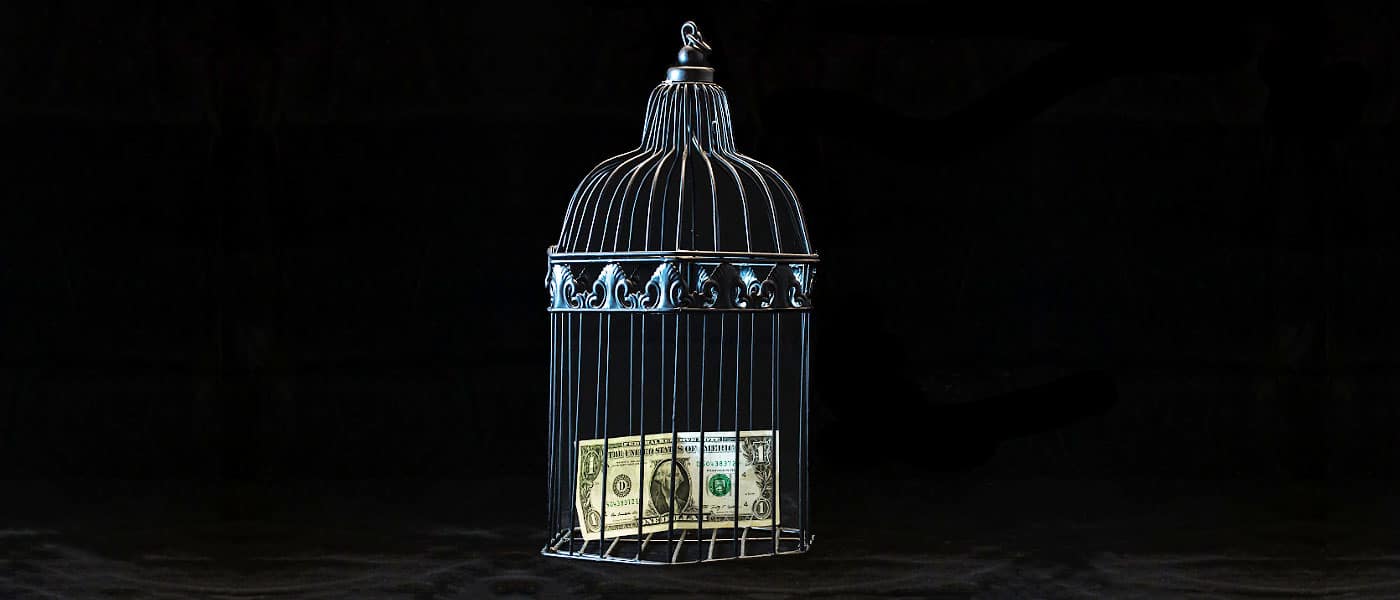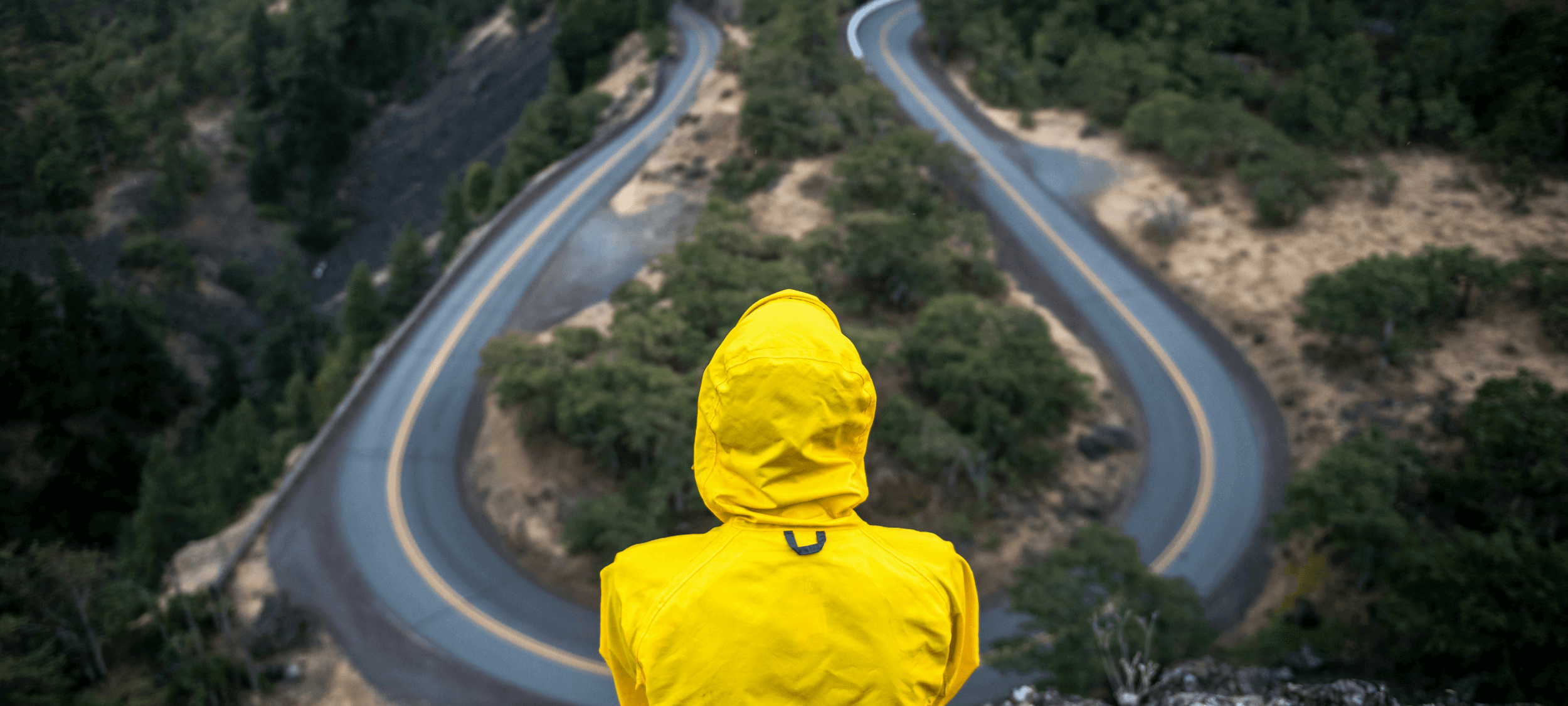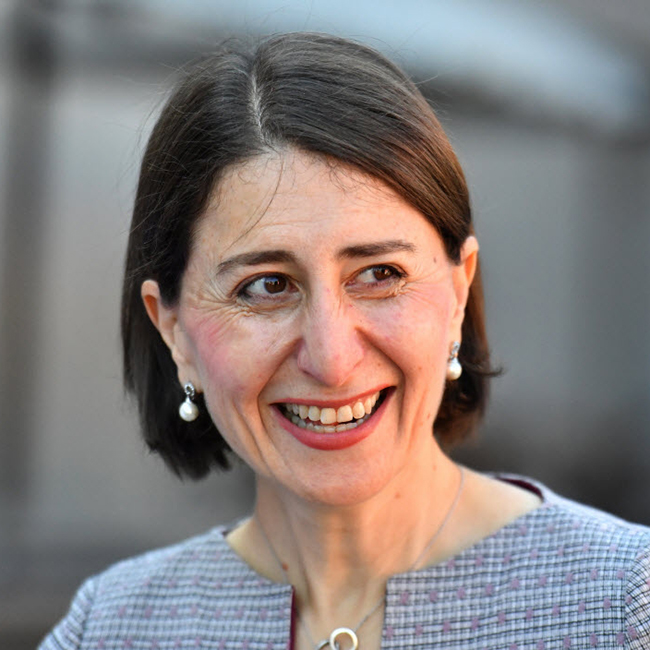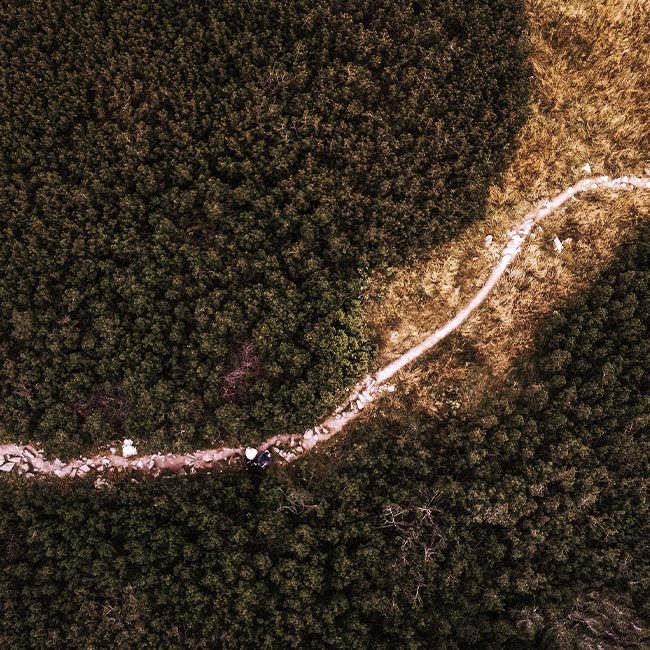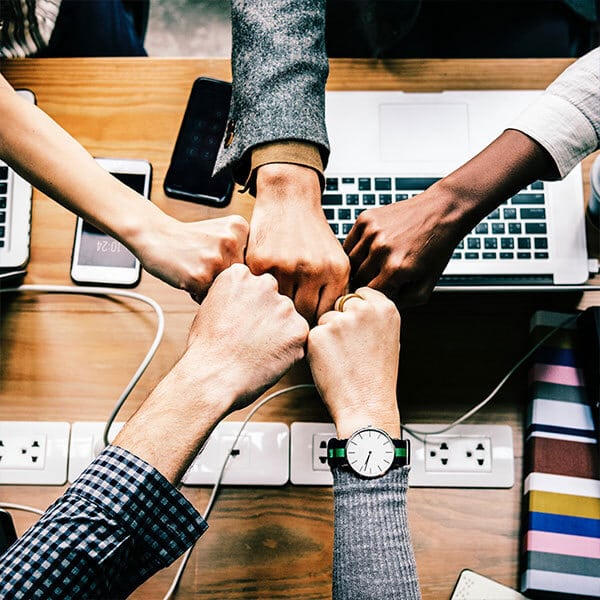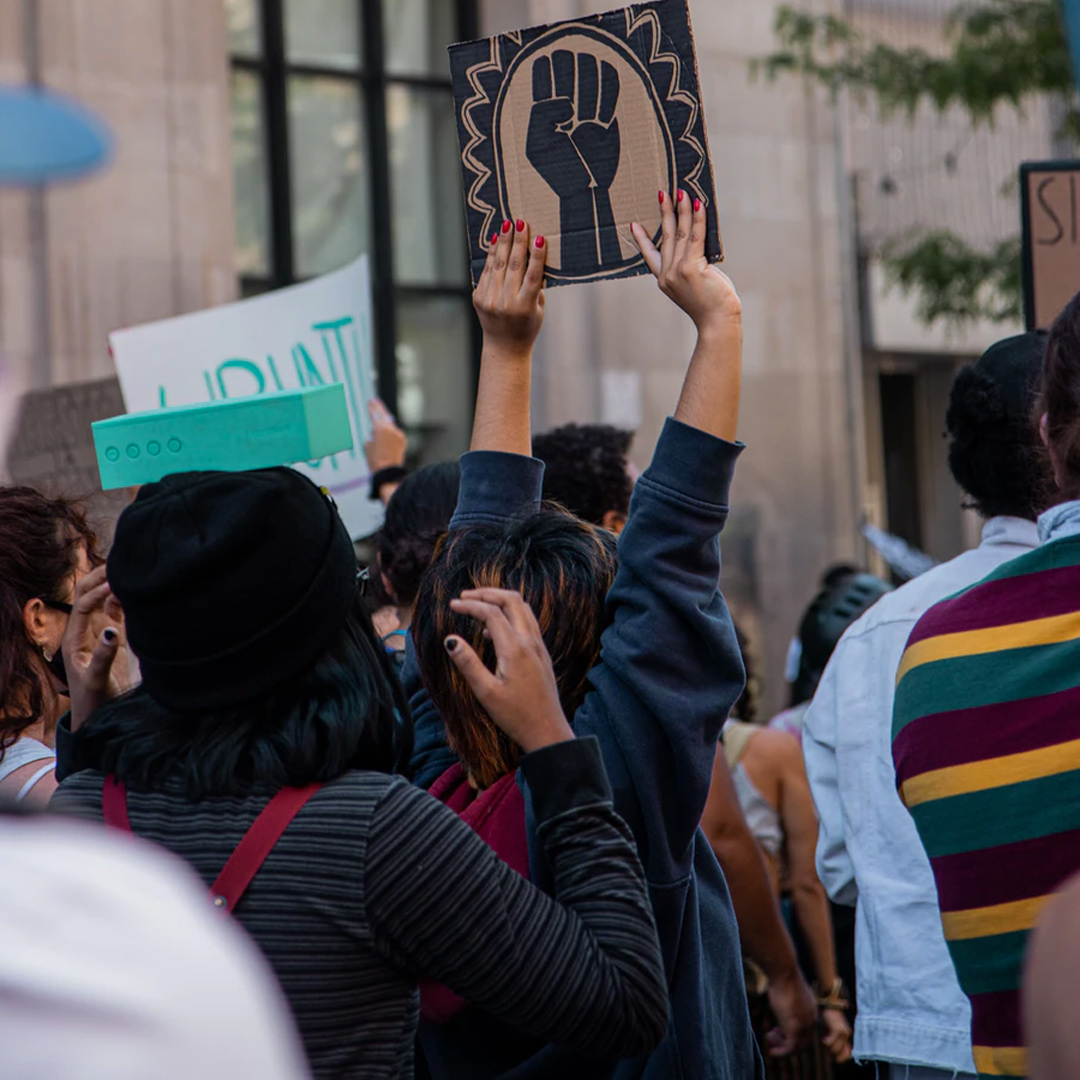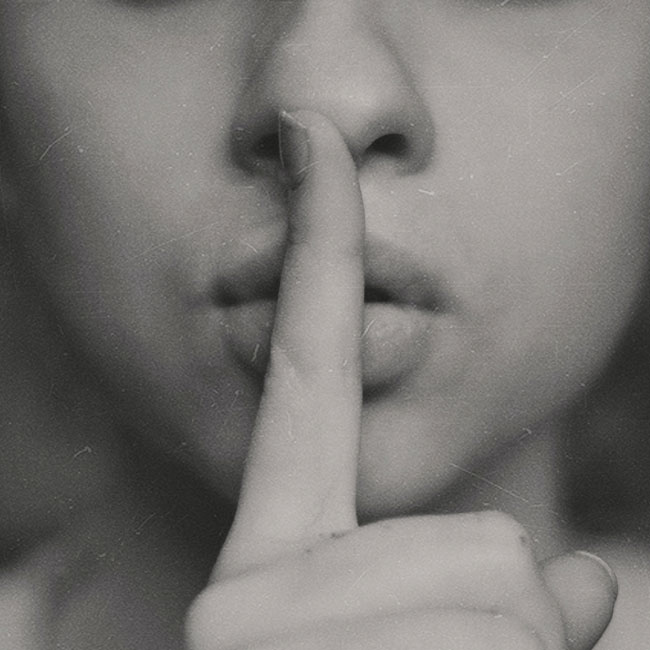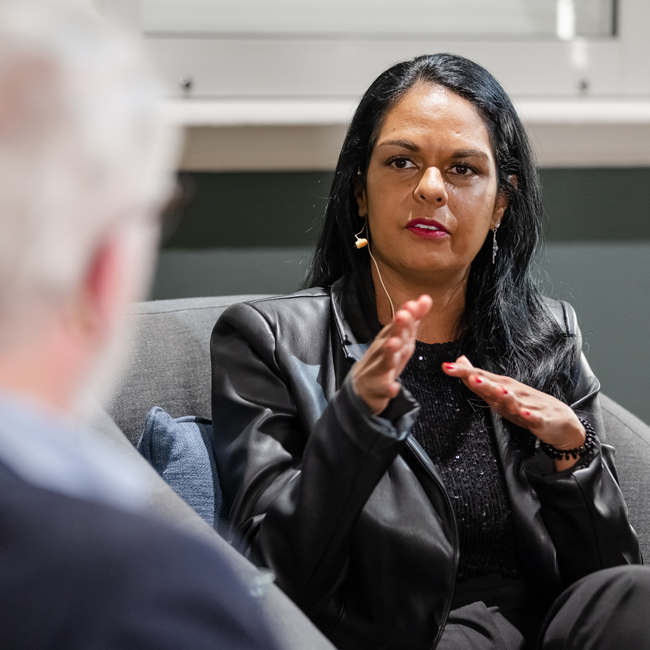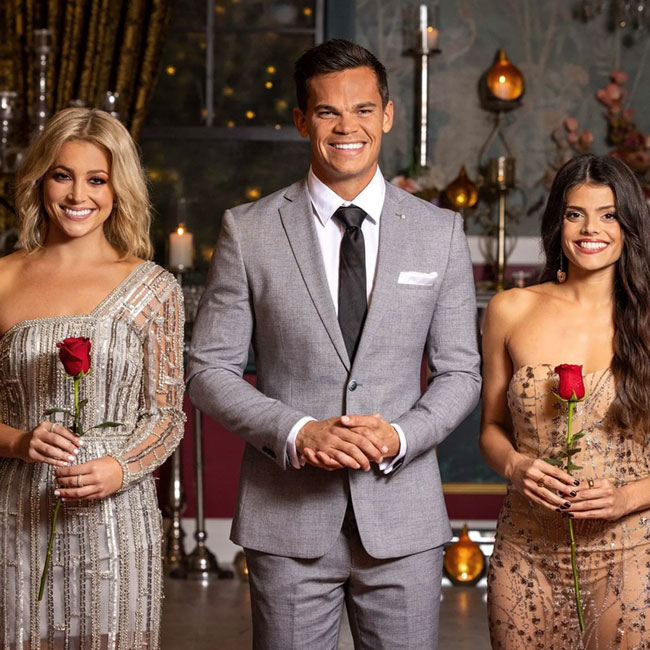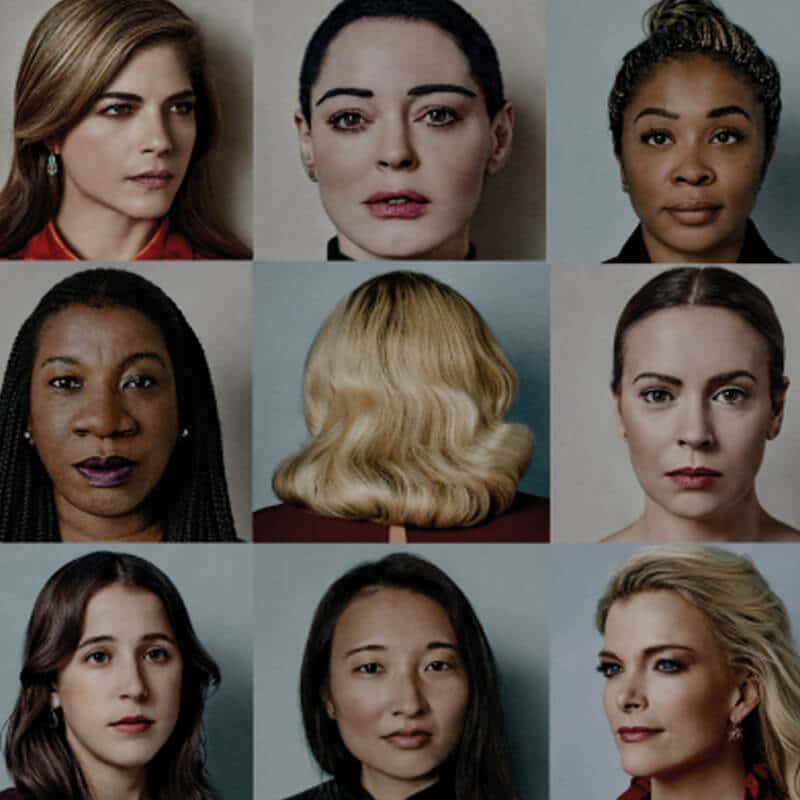Sir Geoff Mulgan on what makes a good leader

Sir Geoff Mulgan on what makes a good leader
Opinion + AnalysisBusiness + Leadership
BY The Ethics Centre 16 NOV 2022
Sir Geoff Mulgan has had a world of careers. Currently Professor of Collective Intelligence, Public Policy and Social Innovation at University College London, Mulgan discusses trust, power and what makes a good leader.
“There’s a risk in any relationship of power that it can amplify your vices as well as your virtues – vices of vindictiveness or meanness, of spirit or dishonesty. And I’m sure there’s some of that in me, probably because of my character faced by pressures and threats I’d be more likely just to run away and resign, rather than to become a sort of evil Adolf Hitler in the bunker type but you certainly see this in many other people.”
Geoff Mulgan has spent his entire career musing over the question: what makes a good leader? And not only that, but how you cultivate those skills and that mindset without becoming …a psychopath. This thinking prompted Geoff to write a book on this subject, in which he critiques the strong traditions within Christianity and Chinese philosophy. He explores the idea that what constitutes a good leader essentially depends on the ethics of the individual – that, if only you could find the right person for the right job everything would go swimmingly… through his vast research and experience, Geoff says this is completely wrong.
“We are creatures of our context. We are far more likely to be good leaders if there are constraints and pressures, if what we do is visible, if there are balancing forces and many people. Even apparently quite good people, if they can get away with things, will get away with those and they may start quite good. But five, ten, let alone 15 years later, if they’re still in power, they become evil monsters and again and again we see that at the global level.”
Are leaders scared of wisdom?
It’s in a leader’s interest to elicit a sense of awe and respect in their followers. They should be in possession of higher knowledge that can justify to those who work for them that they are worthy of that position. According to Geoff, that is why no leader can ever be completely transparent as they need to maintain this sense of mystery about their workings.
“As a leader I think you have to maintain an opacity, a sort of mystery about your knowledge and wisdom. You see it very clearly in how people talk about Putin or Modi or Xi. They wanted to project onto them this sort of genius, brilliant tactical, strategic genius, which we couldn’t understand. It’s sort of beyond comprehension, but we just sit back and admire it.“
And Geoff sees this behaviour amongst business leaders all the time – “the hagiographic magazine articles and books trying to cultivate an aura, a mysterious magical genius around their insights… which then suddenly collapses when the share price drops.”
Declining trust in institutions
When Geoff was working within the British government he said one of the biggest concerns internally was wavering trust in public institutions. As a result, he lead a large scale project under former UK Prime Minister Tony Blair asking the question: what could be learnt from how public institutions had lost and regained trust? He found the learnings for rebuilding trust were simple:
- Publicly acknowledge and apologise when something has gone wrong
- Articulate your moral purpose
- Perform your core function competently
The key positive that Geoff took away from this research was that: the problem of trust and trustworthiness is actually a fixable problem if you acknowledge it clearly and if you have the courage to really deal with it on these three key dimensions.
Is it possible to lead without getting your hands dirty?
“One of the weird things about leadership is you need a dual mind all the time of apparently opposite qualities – arrogance and humility, toughness and sensitivity, which need constantly replenishing and keeping in a balance… And if you drift too far in either direction, you won’t function very well.”
Geoff set up a young leadership training program in the UK, called “Uprising” and he explains the two dualities that he endeavoured to instil in the course which are:
- You have to be tough and have a thick skin. You’ll need to do things that are unpopular and unpleasant like firing people and closing things down and you need to be psychologically prepared to do that.
- On the flip side you also need to maintain your sensitivity, and not allow the aforementioned thick skin to destroy your ability to be kind and virtuous.
The second duality is: arrogance and humility
- Anyone becoming a leader needs to have a sense of arrogance, they need to believe that they are genuinely better than a million other people who could fill the role. Arrogance isn’t a bad thing, it’s a necessary thing to overcome setbacks, the personal attacks, the social media trolling and everything else that comes with being a public figure.
- But you also need to be humble. The humility to constantly learn and be open to new ideas.
In his experience, it is the young leaders who can manage to keep both of these sets of dualities in harmony who are the most successful.
The leaders of the future
We have a difficult few decades ahead of us, one that will be characterised by the accelerating climate crisis, widening inequality, austerity, and increasing inflation. Geoff believes that we will need to elevate the best people into positions of power if we are to emerge from the other side of this tumultuous time unscathed. His biggest fear is that, over the next few years the sorts of individuals who would make excellent leaders will shy away from the job because it’s too risky or too damaging to their private life, or just too difficult, and so we must persuade and elevate these individuals who possess that duality of arrogance and humility to put themselves forward and act.
“At the very heart of leadership is some sense of obligation and service to the whole community you are part of, realising almost everything you have has been given to you by others… Very little is created by yourself. And that gift requires a gift back.”
AUDIO: Listen to the full podcast discussion above
Sir Geoff Mulgan is Professor of Collective Intelligence, Public Policy & Social Innovation at University College London (UCL). He was CEO of Nesta, the UK’s innovation foundation from 2011-2019. From 1997-2004 Geoff had roles in UK government including director of the Government’s Strategy Unit and head of policy in the Prime Minister’s office. Geoff advises many governments, businesses, NGOs and foundations around the world. He has been a reporter on BBC TV and radio and was the founder/cofounder of many organisations, including Demos, Uprising, the Social Innovation Exchange and Action for Happiness. He has a PhD in telecommunications and has been visiting professor at LSE and Melbourne University, and senior visiting scholar at Harvard University.
Find out more about other conversations in the Leading with Purpose podcast. Delve into more articles and podcasts like this by signing up to our Professional Ethics Quarterly newsletter.
Ethics in your inbox.
Get the latest inspiration, intelligence, events & more.
By signing up you agree to our privacy policy
You might be interested in…
Opinion + Analysis
Business + Leadership, Society + Culture
There’s something Australia can do to add $45b to the economy. It involves ethics.
READ
Business + Leadership
Meet James Shipton, our new Fellow uncovering the ethics of regulation
Opinion + Analysis
Business + Leadership, Relationships
Can you incentivise ethical behaviour?
Opinion + Analysis
Business + Leadership
Sell out, burn out. Decisions that won’t let you sleep at night
BY The Ethics Centre
The Ethics Centre is a not-for-profit organisation developing innovative programs, services and experiences, designed to bring ethics to the centre of professional and personal life.
Susan Lloyd-Hurwitz on diversity and urban sustainability

Susan Lloyd-Hurwitz on diversity and urban sustainability
Opinion + AnalysisBusiness + Leadership
BY The Ethics Centre 16 NOV 2022
Susan Lloyd-Hurwitz is the CEO of Mirvac, one of Australia’s largest and most respected property groups. Driven by the company’s purpose, to Reimagine Urban Life, Susan talks about how we can redefine the landscape and create more sustainable, connected and vibrant urban environments, leaving a legacy for generations to come.
“When you’re in high school you can only imagine doing the jobs you can see – you can think about being a doctor, a nurse, a lawyer because those jobs exist. But I always say to my own children that the jobs that they’re going to do don’t even exist yet.”
Susan’s parents took a huge risk when they migrated from Belfast in Northern Ireland to Australia, during the Winter of Discontent in 1978 which was characterised by widespread strikes in the public and private sector. At the time she didn’t think much of it, but upon reflection admires the sacrifices her parents made to give her a better life. First in her family to attend university, Susan completed an undergraduate law degree, but upon completion the notion of being a full time lawyer didn’t appeal to her. Deciding to study urban geography, completing a thesis on the migration of Icelanders to Australia, she says it was this rather left field thesis that set her on the path to become the CEO of Mirvac.
“In one of those moments of serendipity I called my university supervisor and said “what does someone like me do for a job?” And he said he’d had a call that very day from Knight Frank, who were looking for a researcher. And I thought, I don’t know the first thing about real estate, but I can analyse, I can write, so why not? And I jumped into real estate and 30 plus years later I’m still in the industry, having worked all around the world for iconic companies. And it was all just that one moment, one phone call to my supervisor launched me off in this direction.”
Striving for a more diverse workplace
“At Mirvac I have tried very hard to ensure we are as gender diverse as possible, and not just gender diversity, gender is just one element of it – we have a full diversity and inclusion effort going on all the time.”
The academic research into diversity is clear: diverse groups make better decisions than homogeneous ones. It’s proven across cultures, across times and across industries. Susan believes that business leaders must be absolutely conscious at all times about diversity within their work force, because if you don’t play close attention, people default to the practice of hiring those most like them. The problem is, that while some elements of diversity are easily marked, diversity of ideas and thought is a lot harder to measure, she says, “it’s not just about having 50% females at the table, it’s a lot deeper than that. You can only measure the things that are obvious, like cultural background or sexual orientation or gender. You can measure those things, and just hope that they all bring some diversity of thought.”
“I’m very, very proud that at Mirvac we have a zero like for like gender pay gap and have maintained that for six years. And it is very hard to maintain if you if you take your eye off for one minute, the gender pay gap, with all the best intentioned in the world comes creeping back into the organisation.”
What keeps Susan Lloyd-Hurwitz up at night?
“The pace of house price growth is simply unsustainable, many multiples of times greater than wage inflation, which is very anaemic. So it is something that does need urgently to be addressed.”
Housing affordability is one of the most important challenges of our time, and Susan believes the problem lies with supply, “We simply don’t do enough dwellings for the growth of household formation in this country. It is a very serious problem and better or worse in different parts of Australia.” When thinking about solutions to the housing crisis and how we might build the cities of the future, Susan has proven that she thinks very much outside the box, conceiving of the idea of “a house with no bills”. “Imagine if you could live in a house and never pay another energy or water bill. Wouldn’t it be transformational for millions of people. What if we could design a different way of building homes so that we were creating no waste?”
A shift towards a more sustainable future
“The business of business is not just business. It is a lot broader than that. People sign up for a noble mission.”
Ten years ago when Mirvac launched the “This Changes Everything” sustainability strategy, with the goal of being net positive in waste water energy by 2030 (without yet having the technology to do so) people thought she was mad. “senior members of industry said you should never set targets that you don’t know how to meet”. Despite the opposition, Susan doggedly pushed on, and fast forward to 2022, Mirvac is now net positive in scope one, and in scope two emissions are 9 years ahead of schedule. She speaks about how rapidly the notion of sustainability is changing at every level of business from the C-suite to the consumer, “our residential customers who ten years ago, if you were talking to them about sustainability upgrades in their home or apartment, they would hear corporate spin and greenwash. And now they buy sustainability upgrades because they have a desire to live in a more impactful way and with a better impact on the planet.”
“Mirvac people generally don’t wake up in the morning and think, I’m going to go generate some earnings per share today. But they do get up in the morning and think about the legacy that they’re going to leave, how they’re going to push forward design and how they’re going to think about how we can design out our waste from our sites. Those are the things that get Mirvac people motivated, and they’re an extremely passionate group of people dedicated to leaving the world a better place than when we found it.”
AUDIO: Listen to the full podcast discussion above
Susan Lloyd-Hurwitz was appointed Chief Executive Officer & Managing Director in August 2012 and a Director of Mirvac Board in November 2012. Prior to this Susan was Managing Director at LaSalle Investment Management. Susan has also held senior executive positions at MGPA, Macquarie Group and Lend Lease Corporation, working in Australia, the US and Europe.
Susan is a Director of the Business Council of Australia, member of the NSW Public Service Commission Advisory Board, a member of the INSEAD Global Board, a Trustee of the Australian Museum Foundation, and the immediate past Chair of the Green Building Council of Australia. She holds a Bachelor of Arts (Hons) from the University of Sydney and an MBA (Distinction) from INSEAD (France).
Find out more about other conversations in the Leading with Purpose podcast. Delve into more articles and podcasts like this by signing up to our Professional Ethics Quarterly newsletter.
Ethics in your inbox.
Get the latest inspiration, intelligence, events & more.
By signing up you agree to our privacy policy
You might be interested in…
Opinion + Analysis
Business + Leadership
Taking the bias out of recruitment
Opinion + Analysis
Business + Leadership, Politics + Human Rights
We are on the cusp of a brilliant future, only if we choose to embrace it
Opinion + Analysis
Business + Leadership
Self-interest versus public good: The untold damage the PwC scandal has done to the professions
Opinion + Analysis
Business + Leadership, Politics + Human Rights
Berejiklian Conflict
BY The Ethics Centre
The Ethics Centre is a not-for-profit organisation developing innovative programs, services and experiences, designed to bring ethics to the centre of professional and personal life.
Tim Walker on finding the right leader

Tim Walker on finding the right leader
Opinion + AnalysisBusiness + Leadership
BY The Ethics Centre 16 NOV 2022
Tim Walker was Former Chief Executive and Artistic Director of the London Philharmonic Orchestra for over twenty years. Balancing its long and distinguished history with a reputation as one of the UK’s most adventurous and forward-looking orchestras, Walker discusses what it takes to grow a profitable business and find the right leader.
Tim Walker was nine when he started learning how to play the piano, and it was only upon attending his very first orchestra, that he realised how much more fun it was to play with other people. So that night, when he arrived home Tim promptly begged his parents to let him start learning the violin too. As a child, Tim was part of the youth orchestra at school, but after a while found it wasn’t really for him… but it was the notion of managing an orchestra, a job which still had that sense of creativity and community which had stolen his heart.
Finding the right leader
“Yes the conductor holds the musicians together but he or she is also using his or her knowledge and intellect to take the written note of the composer and turn it into something that communicates with us in the audience in a very visceral sense, I would say, because it’s not only something that should hit the heart, I think it also needs to hit the head as well.”
While the musicians in the London Philharmonic Orchestra are some of the most talented in the world, it’s the addition of the right conductor that really helps the players shine. The conductor’s role is to unify all the players to one single interpretation of the music, and while the experience of being in a symphony is entirely collaborative, someone needs to ensure everything is flowing seamlessly. But finding the right person for the job hasn’t always been easy. Traditionally in the 19th and 20th centuries, it wasn’t uncommon for a conductor to lead with an iron fist, however as times have changed, so too have conductor styles.
Growing a profitable business
“Interestingly, the London Philharmonic is one of the few orchestras in the world that actually made money from international touring.”
Before Tim joined the London Philharmonic, the company was solely focused on pursuing profit – the board justified each decision by demonstrating how it would contribute to the bottom line. According to Tim, many people make the mistake of thinking just because the individual elements of an enterprise can pay for themselves, then the sum total will be a sustainable enterprise. However, Tim says there are some avenues that need to be pursued not because they generate profit, but rather because doing those things positions the orchestra for the future. As a result, under Tim’s guidance the London Philharmonic recorded all the national anthems for the London Olympics and played at the Queen’s jubilee, not because they were profitable – but because they intrinsically felt like the right thing to do.
Do people still care about orchestras?
“I think, the people do take for granted a lot of the music in their lives as being sort of like wallpaper. I remember when I was talking to somebody who may not know the London Philharmonic, but as soon as I say we recorded all the soundtracks for The Lord of the Rings, suddenly they understand… But they don’t really.”
Over Tim’s twenty year tenure as Artistic Director and Chief Executive of the London Philharmonic, he reveals the hardest part of the job was just keeping everything going. The dilemma is though some would argue that enjoying art is a necessity, music is not the equivalent of food and basic services, so the purchasing of a concert ticket is something that in times of financial stress slows or stops altogether. “You can’t let the institution die on your watch… you’re responsible for 150 full time and 75 part time employees all dependent on ensuring that they can pay their mortgages and put bread on the table.”
Tim highlights that these last few years with COVID-19 have been particularly challenging as audiences are not flocking back as they had hoped.
Tim believes the way to forge a path out of the pandemic is to remind audiences that real people are making this music. The need for live music will never go away, but when you have 200 people whose livelihoods rely on ticket sales, then large orchestras won’t be around for a long time unless we start buying tickets.
“When you care for something, you’ve also got to care for how it’s maintained. So there needs to be a cost to care. And the care for orchestras is in people making the effort to actually go to concerts and appreciate what they have.”
AUDIO: Listen to the full podcast discussion above
Timothy Walker CBE AM Hon RCM was Chief Executive and Artistic Director of the London Philharmonic Orchestra. He was formerly the founder and Chief Executive of World Orchestras and prior General Manager of the Australian Chamber Orchestra. Mr Walker was on the Board of the International Society for the Performing Arts and was Chair of the Association of British Orchestras.
He was an inaugural member of the Australian International Cultural Council, and has served as a director of the London Philharmonic Orchestra, the Henry Wood Hall Trust and the Rachmaninoff Foundation.
Mr Walker has an honours degree in Arts, a Diploma of Music and a Diploma of Education from the University of Tasmania and a Diploma of Financial Management from the University of New England. He has been a consultant to the Australia Council, Create NSW, Creative Victoria, The Australian Ballet, the Australian Festival of Chamber Music, the Tasmanian Symphony Orchestra, the Sydney Conservatorium of Music and the Orcquestra Sinfonica do Estado de Sao Paulo.
Find out more about other conversations in the Leading with Purpose podcast. Delve into more articles and podcasts like this by signing up to our Professional Ethics Quarterly newsletter.
Ethics in your inbox.
Get the latest inspiration, intelligence, events & more.
By signing up you agree to our privacy policy
You might be interested in…
Opinion + Analysis
Business + Leadership
Why do good people do bad things?
Opinion + Analysis
Business + Leadership
The invisible middle: why middle managers aren’t represented
Opinion + Analysis
Business + Leadership, Relationships
Game, set and match: 5 principles for leading and living the game of life
Opinion + Analysis
Business + Leadership, Relationships
Employee activism is forcing business to adapt quickly
BY The Ethics Centre
The Ethics Centre is a not-for-profit organisation developing innovative programs, services and experiences, designed to bring ethics to the centre of professional and personal life.
Roshni Hegerman on creativity and constructing an empowered culture

Roshni Hegerman on creativity and constructing an empowered culture
Opinion + AnalysisBusiness + Leadership
BY The Ethics Centre 16 NOV 2022
Roshni Hegerman is one of the most awarded strategic thinkers globally. Currently JPAC Market Maker and Experience Director across sustainability and people with Oracle, she discusses creativity, psychological safety and how to construct an empowered culture.
When Roshni was a little girl growing up in India, she didn’t have dreams of being an executive or a director, she had much more humble aspirations to be a social worker. Though her parents didn’t feel it was a career path that could support a family long term, Roshni had her heart set on working with people at a local level.
With this in mind, she studied sociology and psychology in college, but then drifted into journalism and communications, which is where her marketing and communications career really begun. Although, she never did realise the goal of becoming a social worker, the ethos of social work and community has informed all of her decision making she says, “I get realy excited by the power of ideas and how they can connect with people and actually drive either a shift in perception or a shift in behaviour or give people a different lens to kind of view the world through that they wouldn’t have typically viewed it through.”
Be a radiator, not a drain
“I think that the traditional sense of creativity probably isn’t as valued as it could be. I think the use of creativity is to innovate and to do things differently and to think about how you’re going to connect in and change things in a positive way. So from that perspective, I actually think that creative thinking is the only thing that cannot be automated.”
Roshni believes that in the modern workplace, as we shift full speed into the world of automation, creativity and the capacity to think outside the box will actually be the most important skill set for young leaders and changemakers of the future.
One of the things that has stuck with her throughout her professional career is to “be a radiator not a drain”. Rather than be a drain she says, sucking the energy out of the room by sticking to the rules and following traditions, we should be radiators – empowering others, generating ideas, and inspiring new ways of thinking. “I think people are starting to realise that if you’re going to continue to do the same thing and get the same result, and the end and it’s not a positive one, then something has to change.”
Roshni often reflects on her professional practice asking a few key questions:
- How can I use my influence to be more of a radiator?
- Is there a more interesting or different direction we could consider?
- What’s stopping us from being more passionate about a project?
- How can I generate enthusiasm in my team?
- Embrace new and innovative ideas
She suggests that if you can be more of a radiator in your workplace, then people will naturally gravitate towards you, there will be less resistance to your ideas.
People who feel safe have the best ideas
“It’s when you feel like you have to meet a quota and you have to get something done that you tend to revert back to what you know and you don’t feel safe to kind of go out of that box and try something different. It’s when you have an organisation where employees feel safe to kind of give something a go and they’re empowered to be able to do that.”
In order to truly embrace one’s inner radiator, one must feel safe and confident within their team to share their ideas without fear of criticism.
Throughout her career, Roshni has explored the idea of psychological safety in the workplace environment. She suggests as leaders it’s important to create a space of safety in the workplace that allows people to feel more open to being more vulnerable whilst confident enough to have their ideas challenged.
She says, “I think it is very important to create an environment where where you don’t feel threatened by the ideas that you have. There needs to be an environment that allows you to feel at ease with sharing kind of a strong point of view, regardless of which direction you come from.”
Roshi works hard to identity the natural unconscious biases that stop team members from being curious because they believe they already know the answer. She emphasises that it’s important to consciously ask pointed questions and embed curiosity and innovation into every element of organisational structure and process in order to force people to look at things from a different perspective.
“I think it helps create a culture of discovery, empathy, curiosity, and opens up different possibilities of pathways that could be considered. So that’s one of the things I feel really excited by is going, ‘how do we consciously think about these things and what can we do to ask the right questions so that we are having the right conversations so that we can engage people’s curious mind to think about things differently?”
Contributing to a better world
“You need to be willing to have a lived experience. You can’t just say that you care about indigenous people or homeless people. You need to see it from their perspective and understand what they’re going through in order to be able to help in the way that they need you to help them, not how you want to help them.”
Despite diverting from the pathway to a career in social work all those years ago, Roshni maintains that the notion of caring for others and celebrating a sense of community has never left her. It’s important to consider the lived experience of different people, rather than assume what people need, you should strive to constantly be out in different communities and speaking to people directly in order to enrich your own perspective.
Roshni suggests it all comes down to realising that at the end of the day, we are all humans who want to be treated with dignity and respect. She believes in giving those who are underrepresented a voice, and a platform so they can get the help that they need. Her advice for the business leaders of the future is: It’s important to understand that it’s not all about you, that the world is about others, that you occupy it with. So how can you actually help make things better, not just for yourself, but for the people around you?
AUDIO: Listen to the full podcast discussion above
Roshni Hegerman is a force of nature with an unstoppable passion to move businesses and people, creating positive impact and change. Roshni currently is JAPAC Market Maker, Experience Director, with Oracle across Sustainability and People; and is founder of her own strategic creative consultancy, PinchofMasla. Roshni is global citizen unafraid of traversing new and unchartered terrain, in fact she relishes in it – working and thriving in United States, China, India and now Australia – with three beautiful children in tow. Roshni helped launch the iPhone in China, start-up BBH and BBDO in India; grow Coca-Cola’s footprint across Asia.
Roshni is a champion for diversity and inclusion and one of the most awarded strategic creative thinkers globally. She has started her own Women in Leadership networking group – “Ladies that Lunch,” to bring like-minded female leaders together to make meaningful change and collaborates closely with Igniting Change and Campfire X, tiny but meaningful organisations that spark big positive change. Roshni launched “Creating Meaningful Change” while at McCann Australia, a 365-day initiative, that puts conscious inclusion at the centre of the agency’s strategic and creative operating system.
Roshni believes that magic is found in the intersection of humanity, creativity and technology.
Find out more about other conversations in the Leading with Purpose podcast. Delve into more articles and podcasts like this by signing up to our Professional Ethics Quarterly newsletter.
Ethics in your inbox.
Get the latest inspiration, intelligence, events & more.
By signing up you agree to our privacy policy
You might be interested in…
Opinion + Analysis
Business + Leadership, Politics + Human Rights, Society + Culture
Corruption, decency and probity advice
Opinion + Analysis
Business + Leadership
Why businesses need to have difficult conversations
Opinion + Analysis
Business + Leadership
Pulling the plug: an ethical decision for businesses as well as hospitals
Opinion + Analysis
Business + Leadership, Climate + Environment, Society + Culture
Overcoming corruption in Papua New Guinea
BY The Ethics Centre
The Ethics Centre is a not-for-profit organisation developing innovative programs, services and experiences, designed to bring ethics to the centre of professional and personal life.
Sylvie Barbier and Rufus Pollock on failure and fostering a wiser culture

Sylvie Barbier and Rufus Pollock on failure and fostering a wiser culture
Opinion + AnalysisBusiness + Leadership
BY The Ethics Centre 16 NOV 2022
Sylvie Barbier and Rufus Pollock are the partners in business and life who strive to build wiser future through culture, space and community. With a unique and innovative approach to business, the pair uncover the realities of being a leader, the importance of failure and fostering a wiser culture.
As a performer, Sylvie Barbier has a real passion for community. Her work is a tenacious exploration of the idea of “art as a conversation” and it’s these thematics of life, discussion, and unity which has equipped her to establish the Life Itself initiative. Together with her partner Rufus, a creative technologist and economist, the two have built a collective based in the half way space between Silicon Valley and the Plum Village in the South of France, which is engaged with creating a weller and wiser world.
On defining leadership
“There is an incredible thirst for leadership, not necessarily leaders – but for leadership.”
The world is in a moment of transition. There is an impending climate crisis, widening inequality as well as a huge amount of disunity and civil unrest, and Rufus believes that we must harness this specific moment in time to interrupt our current archaic notions of what constitutes a leader to craft something new and innovative. He suggests, “we are at a cultural moment where leadership is badly needed, but hugely undermined in part because of these past traumas that we are healing from.”
The reality of being leaders
“There’s always going to be a problem, you’re either not doing enough, or you’re doing too much and being oppressive.”
Having led multiple different initiatives through tech, art and community, both Sylvie and Rufus have learnt a lot about the process of leading. Now that they jointly lead Life Itself, they are encountering a whole new suite of hurdles and challenges as part of running the collaborative residency programs. The programs bring a collection of thinkers, creators, technologists and spiritualists together over an extended period to time to debate and engage with the challenges of the modern world.
Rufus says the hardest part is finding the balance as a leader, “invariably after three months there is some sort of crisis – someone is imposing too many rules, someone has to cook too often – and ultimately you are trying to facilitate the group to engage in a transformation and face these issues, what people must learn is that we need to engage with failure. We have an allergy to failure, but it’s these breakdowns which are the most valuable.”
When leaders fail
Capitalist culture dictates that when a company has some major failing – it is generally the CEO who must hand in their resignation. That the decks must be cleared for fresh blood and new ideas to flush out the old. However Rufus fears we may have gone too far, suggesting that we’ve descended into conducting “ritualised executions” when we decide someone needs to take the blame – just because the leader has left their position doesn’t mean the company will be any better off. Rufus suggests that it’s important to identify the source of the problem, and to think about the duties and responsibilities of leaders more holistically.
In reflecting on their own careers both Rufus and Sylvie acknowledge that they have made some mistakes, and at times mismanaged things. As he continues to learn about leadership, Rufus has let go of trying to achieve everything himself, saying, “leadership is about creating a space in which other people can flourish. I think more and more for myself, based on a huge number of errors, it is the act of creating space versus doing it myself which is central.”
Sylvie agrees, adding her biggest obstacle was she had a tendency to pursue ideals without being grounded in the reality of the world and the reality of who she is. She explores her issues with reconciling these two ideas, “sometimes I felt that the vision I had almost became a burden because it was my responsibility to make it happen. And if it doesn’t happen it’s my fault.”
In the past she was characterised by the ruthless pursuit of intangible goals, but found she was ultimately dissatisfied with this way of leading because when she achieved these goals she would immediately need to move on to something else and it felt particularly dissatisfying.
She concludes, “the world is already perfect the way it is, it doesn’t need to be any different than the way it is right now. And in a moment of radical acceptance, I realised I was already in paradise.”
AUDIO: Listen to the full podcast discussion above
Sylvie ‘Shiwei’ Barbier is a French-Taiwanese performance artist, entrepreneur and educator. Her work synthesizes Eastern and Western philosophies and aesthetics. She co-founded Life Itself to build a wiser future through culture, space and community. Her performance art pieces are contemporary rituals, where the audience is invited to take an active and interactive role. She uses language such as Koans as a bridge for the mind into the spiritual realm, by pushing us beyond the bounds of the intellect into a space of greater wholeness and connection.
Rufus Pollock is a technologist, entrepreneur, writer and long-term zen practitioner. He is the founder of Open Knowledge, an award-winning international digital non-profit. Formerly a Shuttleworth Fellow, Ashoka Fellow and a Mead Fellow in Economics at Cambridge University. His book the Open Revolution sets out a vision for a open, free and free information economy and has been translated into multiple languages. As a co-founder of Life Itself he brings curiosity and rigour to ongoing inquiry into how we can create a radically wiser, weller world for all.
Find out more about other conversations in the Leading with Purpose podcast. Delve into more articles and podcasts like this by signing up to our Professional Ethics Quarterly newsletter.
Ethics in your inbox.
Get the latest inspiration, intelligence, events & more.
By signing up you agree to our privacy policy
You might be interested in…
Opinion + Analysis
Business + Leadership, Society + Culture
Banking royal commission: The world of loopholes has ended
Opinion + Analysis
Business + Leadership
Volt Bank: Creating a lasting cultural impact
Opinion + Analysis
Business + Leadership
Pulling the plug: an ethical decision for businesses as well as hospitals
Opinion + Analysis
Business + Leadership
How to build a successful culture
BY The Ethics Centre
The Ethics Centre is a not-for-profit organisation developing innovative programs, services and experiences, designed to bring ethics to the centre of professional and personal life.
Ethics Explainer: Truth & Honesty

How do we know we’re telling the truth? If someone asks you for the time, do you ever consider the accuracy of your response?
In everyday life, truth is often thought of as a simple concept. Something is factual, false, or unknown. Similarly, honesty is usually seen as the difference between ‘telling the truth’ and lying (with some grey areas like white lies or equivocations in between). ‘Telling the truth’ is somewhat of a misnomer, though. Since honesty is mostly about sincerity, people can be honest without being accurate about the truth.
In philosophy, truth is anything but simple and weaves itself into a host of other areas. In epistemology, for example, philosophers interrogate the nature of truth by looking at it through the lens of knowledge.
After all, if we want to be truthful, we need to know what is true.
Figuring that out can be hard, not just practically, but metaphysically.
Theories of Truth
There are several competing theories that attempt to explain what truth is, the most popular of which is the correspondence theory. Correspondence refers to the way our minds relate to reality. In it, truth is a belief or statement that corresponds to how the world ‘really’ is independent of our minds or perceptions of it. As popular as this theory is, it does prompt the question: how do we know what the world is like outside of our experience of it?
Many people, especially scientists and philosophers, have to grapple with the idea that we are limited in our ability to understand reality. For every new discovery, there seems to be another question left unanswered. This being the case, the correspondence theory leads us to a problem of not being able to speak about things being true because we don’t have an accurate understanding of reality.
Another theory of truth is the coherence theory. This states that truth is a matter of coherence within and between systems of beliefs. Rather than the truth of our beliefs relying on a relation to the external world, it relies on their consistency with other beliefs within a system.
The strength of this theory is that it doesn’t depend on us having an accurate understanding of reality in order for us to speak about something being true. The weakness is that we can imagine there being several different comprehensive and cohesive system of beliefs that, and thus different people having different ‘true’ beliefs that are impossible to adjudicate between.
Yet another theory of truth is pragmatist, although there are a couple of varieties, as with pragmatism in general. Broadly, we can think of pragmatist truth as a more lenient and practical correspondence theory.
For pragmatists, what the world is ‘really’ like only matters as far as it impacts the usefulness of our beliefs in practice.
So, pragmatist truth is in a sense malleable; it, like the scientific method it’s closely linked with, sees truth as a useful tool for understanding the world, but recognises that with new information and experiment the ‘truth’ will change.
Ethical aspects of truth and honesty
Regardless of the theory of truth that you subscribe to, there are practical applications of truth that have a significant impact on how to behave ethically. One of these applications is honesty.
Honesty, in a simple sense, is speaking what we wholeheartedly believe to be true.
Honesty comes up a lot in classical ethical frameworks and, as with lots of ethical concepts, isn’t as straightforward as it seems.
In Aristotelian virtue ethics, honesty permeates many other virtues, like friendship, but is also a virtue in itself that lies between habitual lying and boastfulness or callousness. So, a virtue ethicist might say a severe lack of honesty would result in someone who is untrustworthy or misleading, while too much honesty might result in someone who says unnecessary truthful things at the expense of people’s feelings.
A classic example is a friend who asks you for your opinion on what they’re wearing. Let’s say you don’t think what they’re wearing is nice or flattering. You could be overly honest and hurt their feelings, you could lie and potentially embarrass them, or you could frame your honesty in a way that is moderate and constructive, like “I think this other colour/fit suits you better”.
This middle ground is also often where consequentialism lands on these kinds of interpersonal truth dynamics because of its focus on consequences. Broadly, the truth is important for social cohesion, but consequentialism might tell us to act with a bit more or a bit less honesty depending on the individual situations and outcomes, like if the truth would cause significant harm.
Deontology, on the other hand, following in the footsteps of Immanuel Kant, holds honesty as an absolute moral obligation. Kant was known to say that honesty was imperative even if a murderer was at your door asking where your friend was!
Outside of the general moral frameworks, there are some interesting ethical questions we can ask about the nature of our obligations to truth. Do certain people or relations have a stronger right to the truth? For example, many people find it acceptable and even useful to lie to children, especially when they’re young. Does this imply age or maturity has an impact on our right to the truth? If the answer to this is that it’s okay in a paternalistic capacity, then why doesn’t that usually fly with adults?
What about if we compare strangers to friends and family? Why do we intuitively feel that our close friends or family ‘deserve’ the truth from us, while someone off the street doesn’t?
If we do have a moral obligation towards the truth, does this also imply an obligation to keep ourselves well-informed so that we can be truthful in a meaningful way?
The nature of truth remains elusive, yet the way we treat it in our interpersonal lives is still as relevant as ever. Honesty is a useful and easier way of framing lots of conversations about truth, although it has its own complexities to be aware of, like the limits of its virtue.
Ethics in your inbox.
Get the latest inspiration, intelligence, events & more.
By signing up you agree to our privacy policy
You might be interested in…
Opinion + Analysis
Relationships
Why have an age discrimination commissioner?
Opinion + Analysis
Relationships, Society + Culture
Meet Dr Tim Dean, our new Senior Philosopher
Opinion + Analysis
Politics + Human Rights, Relationships, Society + Culture
The sticky ethics of protests in a pandemic
Opinion + Analysis
Politics + Human Rights, Relationships
To Russia, without love: Are sanctions ethical?
BY The Ethics Centre
The Ethics Centre is a not-for-profit organisation developing innovative programs, services and experiences, designed to bring ethics to the centre of professional and personal life.
Sportswashing: How money and politics are corrupting sport

Sportswashing: How money and politics are corrupting sport
Opinion + AnalysisPolitics + Human Rights
BY Dr Tim Dean 9 NOV 2022
Many believe that sport transcends politics. But it can also be used as a political tool to distract attention from human rights abuses, making sportspeople and fans complicit.
Legions of football fans with faces daubed in their national colours fill the spotless new stadium and explode into a roar when their team lands the ball in the back of net at the FIFA World Cup 2022 in Qatar.
From the promotional video alone, the scene seems to exemplify what people love about big sporting events: the emotional highs and lows; the vibrant carnivale atmosphere; the fierce competitive spirit; the skill of the athletes.
But to the millions of migrant workers in Qatar, many of whom helped build the very stadiums that are to host the games, the World Cup likely means something very different.
Qatar has long been criticised for the kafala system of sponsorship-based employment for foreign workers, which has led to underpayment, wage theft and unsafe working conditions, leaving workers powerless to change their employment circumstances. Qatar also has a history of women’s oppression, with women requiring permission from a male guardian to exercise many basic rights, such as pursuing higher education, working in certain jobs or traveling abroad. LGBTI people have also been subject to discrimination and abuse in the country, even on the lead-up to the World Cup.
So it is no accident Qatar is spending billions to host the World Cup, with estimates suggesting the government has pumped over $US 220 billion into the event – more than fifty times what Germany spent in 2006 when it hosted.
This is ‘sportswashing.’ The Qatari government is hoping it can appropriate the positive associations fans have with football to elevate its own status on the international stage and distract from its ongoing human rights violations.
And Qatar is not alone in the practice: Saudi Arabia, another nation with a problematic human rights record, has spent over $US 2 billion on its LIV Tour for golf; and China, criticised for its ongoing persecution and internment of its Uyghur minority, spent billions hosting the 2022 Winter Olympic Games.
But what’s so bad about a country with a troubling human rights record supporting or hosting an unrelated sporting competition? Does watching or travelling to that country to attend the competition make spectators complicit in human rights abuses? And shouldn’t sport be kept separate from politics? To answer these questions, we first need to be clear about what sportswashing is.
What is sportwashing?
Sportswashing refers to states – sometimes individiuals or corporations – that seek to use sport to bolster their image by distracting from their wrongdoing. It’s typically not just a matter of hosting games or supporting a national team but rather pumping money into sport specifically to change people’s attitudes about them.
Why sport?
Sport is more than just entertainment. It exemplifies what many people believe to be noble or aspirational virtues: discipline, hard work, individual excellence, teamwork. For spectators, sport generates intense feelings of belonging and a shared identity that verges on the sacred; a win for one’s team elevates oneself and one’s whole community. Sport also reaches a wide audience, including people who may not actively follow politics or world affairs.
So if a regime wants to bolster its reputation around the world, it’s hard to beat tapping into the positive associations people have with sport, especially high profile sports like golf, football or the Olympics. And all you need to do it is enough money. But what does all this money really achieve?
First impressions
What springs to mind when you think of Qatar? For many people whatever it is will be informed by what’s in the media. And if the media has been focusing on Qatar’s human rights violations, it’s these that can define their impression of the country.
This is why nations like Qatar are so keen to offer you new impressions. One function of sportswashing is to saturate the news – and internet search results – with topics other than human rights. If people know little about Qatar, and the World Cup pushes its human rights violations to the second page of Google’s search results, then fewer people will be made aware of them.
There’s another upshot of sportswashing: given many people have powerful feelings about sport, if the majority of the news they hear about Qatar is connected to their beloved game, then their feelings for sport can bleed over into their impression of the country.
Once that positive connection with sport is established, it can come to clash with negative associations they have about human rights violations, causing cognitive dissonance, which describes a tension between two opposing ideas. Most people tend to dislike the feeling of dissonance and will seek to eliminate it, often by ejecting one of the dissonant thoughts. Sportswashing nations hope that the ejected thought is the one about human rights rather than sport.
This is where sportswashing becomes ethically problematic. To the degree that it distracts from wrongdoing, such as human rights violations, it can contribute to the perpetuation of that wrongdoing. Countries are often motivated to enact reforms when they experience pressure from other states, especially large democractic states that are reacting to internal public pressure. If the population is distracted by sport, then public pressure can wane.
Just not cricket
Sportswashing is insidious, as it co-opts something that is otherwise benign and makes those who innocently endorse it complicit in achieving a political end.
But just because someone was not aware of, or chose to ignore, the political dimension of the sporting event, that doesn’t mean they are absolved of responsibility. Sadly, sportswashing makes anyone involved in it complicit to some degree.
If we believe that our ethical obligations extend to those parts of the world that we affect through our actions, then we must consider how our spectating or participating in a sportswashing event might contribute to perpetuating human rights abuses. If we are paying to attend a sportswashed event, we are contributing financially to enabling that event to take place, and through our attendance, we are normalising that activity for others.
There is an even greater ethical weight placed on the shoulders of sportspeople, who are often viewed as role models and whose behaviour can be seen to normalise certain values. This is why we place such emphasis on sportspeople behaving responsibly on and off the field, such as in nightclubs or in their private relationships.
If a sportsperson accepts money to participate in a sportswashed event, that sets a standard for others. And if they are aware of the ethically problematic nature of their hosts, then this opens them to a charge of hypocrisy, as in the case of Phil Mickelson, one of the world’s top golfers, who accepted $US 200 million to join the LIV Tour despite admitting he was aware of Saudi Arabia’s “horrible record on human rights”.
Washing sport
However, there are ways of pushing back against sportswashing. The first is to refuse to support it financially, such as by not buying tickets to the events or subscriptions to the coverage in the media. For some, this will mean missing out on watching a sacred sporting event, and it’s important not to understate how big a cost that might be for them.
However, if they choose to watch, they can consider how to reduce or nullify the impact of the sportswashing. That could involve informing themselves and others about the true state of affairs, reducing the informational distortion caused by sportswashing. In fact, there is evidence that Qatar’s World Cup sportswashing gambit may be backfiring by drawing attention to the very human rights issues it hopes to distract from.
Sportspeople have an even greater responsibility but also a greater potential impact for good. Some have refused to participate in sportswashed events, such as golfer Tiger Woods, who reportedly turned down an offer in excess of $US 700 million to join the Saudi-backed LIV Tour.
In some cases, participating in a sportswashed event can be offset if the individuals work to counter the sportswashed narrative, as in the case of the Australian Soccerros, who released a protest video about human rights in Qatar. While they are playing in the World Cup, they have used their platform to support migrant workers and the decriminalisation of same-sex relationships in Qatar. Football Australia also released a similar written statement. Arguably, more Australians now know about Qatar’s human rights record than if the state had never been chosen to host the World Cup.
When states are involved in funding sport, then sport can no longer be said to be removed from politics. Through sportswashing it becomes a political tool. If we want to maintain sport as a pure and sacred pursuit, then we must consider how we choose to engage with it and how we might avoid or counteract the power of sportswashing to distract or normalise wrongdoing.
Ethics in your inbox.
Get the latest inspiration, intelligence, events & more.
By signing up you agree to our privacy policy
You might be interested in…
Explainer
Politics + Human Rights
Ethics Explainer: Social Contract
Opinion + Analysis
Politics + Human Rights, Relationships, Society + Culture
The sticky ethics of protests in a pandemic
Opinion + Analysis
Health + Wellbeing, Politics + Human Rights
Constructing an ethical healthcare system
Opinion + Analysis
Politics + Human Rights
The ethical price of political solidarity
BY Dr Tim Dean
Dr Tim Dean is Philosopher in Residence at The Ethics Centre and author of How We Became Human: And Why We Need to Change.
When are secrets best kept?

Throughout the ages, people subject to the torments of even the most oppressive regimes have found solace in the fact that even when their bodies are controlled, their minds can remain free.
People have the capacity to hold information and beliefs that cannot be discerned by any mind other than their own. Of course, in many cases (but not all) the mental reserves needed to preserve a secret can be destroyed by those who employ torture. However, only the most vicious and desperate resort to such despicable acts – and even then, they can never be sure that what they are told is actually true. But that is another topic for another time.
For now, I want to highlight the remarkable strength of secrets – a strength conferred by their retention in regions of the human mind that are inaccessible to others.
The fact that we cannot ‘read minds’ allows each of us a particular kind of freedom.
However, it would be a lonely existence if we were not also endowed with the capacity to share our thinking with others through all of the forms of communication available to us – physical, verbal, literal, and symbolic. So, for the most part, we liberally share our thoughts, feelings and beliefs in word and deed – while retaining some things entirely to ourselves.
While this is the context in which secrets exist, it’s important to note the distinction between ‘having’ and ‘holding’ secrets. In the first case, secrets can be our own – something that we know we choose not to disclose to others. In the second case, secrets can ‘belong’ to someone else who has shared them with us – on the condition we preserve the secrecy of what has been disclosed.
There are many examples of both kinds of secret. For example, a person may have suffered some kind of sexual assault in their youth but, for a range of reasons, may never disclose this to another soul. It will be their secret – and they will take it to the grave. Alternatively, if they share this secret with another person – on the condition that no other person ever know this truth – then the latter person will have agreed to hold the secret for as long as required to do so by the person whose secret has been shared with them.
It’s easy to see in this example just some of the problems with secrets. Let’s suppose that the person who abused the youth is still at large – possibly still offending. Does the person who ‘holds’ the secret have an obligation to prevent harm that is greater than the obligation to protect their friend’s secret? One might hope that the friend would agree to reveal the identity of the malefactor. However, what if they refuse? What if a person at risk of abuse asks a direct question about the person whom you know to be a threat to them? Are you required to lie or to dissemble in order to keep the secret?
Of course, the ability to have and to hold secrets can also enable great evil. For example, some secrets can obscure damaging, false beliefs that – even if sincerely held – present grave risks to individuals or whole communities. We can see such ‘secret knowledge’ at work in certain cults and conspiracy theories. Because secret, these sometimes deadly false beliefs cannot be challenged or amended by exposure to the ‘sunlight’ of open enquiry and debate. Deadly secrets can fester and grow in the dark to the point where they can poison whole sections of the community.
What’s more, perverse forms of secrecy can be employed by powerful interests as a tool to control others. Whole regimes have been propped up by ‘secret police’, the cloaking of wrongdoing behind the veil of ‘official secrets’, and so on.
The ethics of secrets have a practical bearing on matters affecting individuals, groups and whole societies. Core questions include: Is there a distinction between a ‘confidence’ and a ‘secret’? Do certain people have a right to know information that others wish to keep secret? Are we ever obliged to disclose another person’s secret? What, if anything, is a ‘legitimate secret’? Who decides questions of legitimacy? How does one balance the interests of individuals and society?
Join Dr Simon Longstaff on Thur 23 Nov as he lifts the lid on secrets and their role in living an ethical life. The Ethics of Secrets tickets on sale now.
Ethics in your inbox.
Get the latest inspiration, intelligence, events & more.
By signing up you agree to our privacy policy
You might be interested in…
Opinion + Analysis
Health + Wellbeing, Relationships
Germaine Greer is wrong about trans women and she’s fuelling the patriarchy
Opinion + Analysis
Politics + Human Rights, Relationships
A new era of reckoning: Teela Reid on The Voice to Parliament
Opinion + Analysis
Relationships
TEC announced as 2018 finalist in Optus My Business Awards
WATCH
Relationships
Purpose, values, principles: An ethics framework
BY Simon Longstaff
Simon Longstaff began his working life on Groote Eylandt in the Northern Territory of Australia. He is proud of his kinship ties to the Anindilyakwa people. After a period studying law in Sydney and teaching in Tasmania, he pursued postgraduate studies as a Member of Magdalene College, Cambridge. In 1991, Simon commenced his work as the first Executive Director of The Ethics Centre. In 2013, he was made an officer of the Order of Australia (AO) for “distinguished service to the community through the promotion of ethical standards in governance and business, to improving corporate responsibility, and to philosophy.” Simon is an Adjunct Professor of the Australian Graduate School of Management at UNSW, a Fellow of CPA Australia, the Royal Society of NSW and the Australian Risk Policy Institute.
Those regular folk are the real sickos: The Bachelor, sex and love

Those regular folk are the real sickos: The Bachelor, sex and love
Opinion + AnalysisRelationshipsSociety + Culture
BY Joseph Earp 4 NOV 2022
In 2021, the star of the US iteration of The Bachelorette, Katie Thurston, made international news off the back of one thirty second clip. In it, Thurston, all smiles and fey giggles, announced that she was forbidding the male contestants searching for her endless love from masturbating.
“I kind of had this idea I thought would be fun, where the guys in the house all have to agree to withhold their self-care as long as possible, if you know what I mean,” Thurston told the show’s two hosts, to a great deal of laughter and blushing. What was she was doing was what Bachelorette stars – and indeed many of those who feature in that brand of modern reality television focused on love and sex – have done for years.
Namely, she was upholding the show’s characteristic, and very strange, mix of euphemism and the explicit stating of norms that are so well-trodden in the culture that they’re not even acknowledged as norms at all.
Indeed, the most surprising thing about the clip was that it generated chatter, from both mainstream outlets and social media, in the first place. The Bachelorette’s habit of not so much ignoring the elephant in the corner, but ignoring the corner, and the walls connected to the corner, and perhaps even the entire room, has been part of its fabric from its very conception.
This is a show ostensibly about desire and love – which is a way of saying that it is about different states that circle around, and often lead to or follow from, sex – that shirks desperately away from most of the ways that we understand these things.
All we get on the desire front is a lot of people who pay a certain kind of attention to their bodies, occasionally – extremely occasionally – kissing one another. And all we get on the love front is a lot of talk about forever and eternity, along with roses, champagne flutes, and tears. Sex, meanwhile, lies far beyond the show’s window of acceptable or even conceivable behaviours. It’s there but it’s not there, a part of the very foundation of the show that’s still so taboo that if someone dares speak it aloud, as Thurston did, they’ll be the odd one.
This backlash to a bizarre norm constructed and maintained by the cameras was taken to an extreme in the case of Abbie Chatfield, a contestant on the Australian version of the show. For daring to tell Bachelor Matt Agnew that she “really wanted” to have sex with him, and admitting that she was “really horny”, Chatfield drew ire from not only the usual anti-sex bores, but from the so-called “sensible mainstream centre.” She was called a slut; her behaviour designated outrageous.
Such a backlash wasn’t just a policing of women’s bodies, though it was that. It was also a policing of the very standards of desire, part of a long attempt to prettify and clean up matters of sex and love, into “good” (read: socially acceptable) talk about these matters, and “bad” (read: unhinged, dangerous, impolite) talk about them.
In a society with a healthier understanding of sexuality, Chatfield wouldn’t be the deviation. The whole strange apparatus around her would be.
Whose Normal?
What makes The Bachelor and The Bachelorette such fascinating, internally frustrated objects is that their restating of the normal reaches such a volume, and resists so many specifics, that it reveals how utterly not-normal, arbitrary, and ill-defined most normal stuff is.
For instance, there is much talk in The Bachelor and The Bachelorette about romantic “compatibility”, a bizarre standard frequently talked about in the culture without ever being actually, you know, talked about. On this compatibility view of love, the pursuit of a significant other is a process of finding someone to fit into your life, as though you have one goal for how you want to be, and only one person who can help you achieve that. It’s that popular meme of the human being as an incomplete jigsaw puzzle, picking up pieces, one by one, and trying to slot them in.
What The Bachelor and The Bachelorette usually reveal, however, is that actually working out who is “the one” for you is much more difficult than the show’s own repeated emphasis on compatibility implies.
The stars of these shows frequently love and desire multiple people at the same time – the entire dramatic tension of the show comes from their final selection of a partner being surprising and tense.
If this compatibility stuff was as simple as it often described – or even clearly explicated – then we’d know after thirty seconds spent between potential two life partners that they’d end up together. There’d be no hook; no narrative arc. Eyes would lock, hearts would flutter, and the puzzle piece would just slot in.
In actuality, on both of these shows, the decision to pick one person over another frequently feels deeply random, and the always vague star usually has to blur their explanations even further into the abstract to justify why they want to be with him, and not with him, or with him.
The Bachelor and The Bachelorette are supposedly triumphant testaments to monogamy – almost all seasons of the show, except the one starring Nick Cummins, the Honey Badger, end with two and only two people walking off together.
But actually, in their typically confused way, they also end up explicating the benefits of polyamory. Often, the stars of these shows have a lot of fun, and derive a lot of pleasure and purpose from being intimate and romantic with a number of people at the same time. When it comes time to choose their “one”, it is frequently with tears – on a number of occasions, the stars have said, in so many words, “why not both?”
Get Those Freaks Away From Me
And why not both? Or more than both? The season of The Bachelor where no contestant is eliminated, everyone goes on dates together, and they all end up having sex and falling in love with one another, is no stranger than the season where only two walk into the sunset.
Monogamy is a norm, which is to say that it is an utterly arbitrary thing spoken loudly enough to seem iron-wrought. Norms are forceful; they tell us that things are the way they are, and could be no other way. In fact, they are so forceful that they have to state not only their own definitional boundaries, but also the boundaries of the thing that they are not – not just pushing the alien away, but the very act of designating things alien in the first place.
It was the philosopher Michel Foucault who noted this habit of branding certain objects, habits, or people as “other” in order to better understand and designate the normal. The Bachelor and The Bachelorette do this both frequently and implicitly, never drawing attention to the hand that is forever sketching abrupt and hurried lines in the sand.
Just consider the things that would be astonishing in the shows’ worlds, without even having to be taboo. For instance, imagine a star being perfectly happy committing to none of the contestants, and merely having sex with a few of them, one after the other. Or a star choosing a contestant but, rather than speaking of their flawless connection together, emphasising “mere” fun, or “mere” pleasure.
None of the preceding critique of these shows is a call to eradicate romantic and sexual norms altogether, if such an definitional cleansing were even possible. We have to make decisions about how we navigate the world together, and norms become a shorthand way of describing these decisions. What we should remember throughout, however, is that we are free to change this shorthand up whenever we like. And more than that, we should resist, wherever possible, the urge to create the other.
After all, if The Bachelor and The Bachelorette tell us anything, it’s that those regular folks are the real sickos.
Ethics in your inbox.
Get the latest inspiration, intelligence, events & more.
By signing up you agree to our privacy policy
You might be interested in…
Opinion + Analysis
Politics + Human Rights, Relationships
Why victims remain silent and then find their voice
Opinion + Analysis
Relationships
If women won the battle of the sexes, who wins the war?
Opinion + Analysis
Relationships
The danger of a single view
Opinion + Analysis
Relationships
When identity is used as a weapon
BY Joseph Earp
Joseph Earp is a poet, journalist and philosophy student. He is currently undertaking his PhD at the University of Sydney, studying the work of David Hume.
Appreciation or appropriation? The impacts of stealing culture

Appreciation or appropriation? The impacts of stealing culture
Opinion + AnalysisRelationships
BY Paul-Mikhail Catapang Podosky 31 OCT 2022
It’s Halloween season. Perhaps your child has just watched Encanto and they’ve asked to wear Bruno’s ruana as a costume for trick-or-treating. Deciding how to answer requires traversing murky moral territory and unpacking the term ‘cultural appropriation.’
Recently, there has been a serious shift in thinking about what makes for an ethically appropriate costume, attracting considerable media attention from the likes of The New York Times, The Atlantic, and The Conversation. The primary concern is that when white people dress-up in outfits removed from their original cultural context, this constitutes cultural appropriation. But what exactly makes cultural appropriation ethically problematic? And does this mean that certain Halloween costumes, such as Bruno’s ruana, are off-the-table for white people?
At the Festival of Dangerous Ideas in September 2022, the session ‘Stealing Culture’ questioned whether cultural appropriation is an important ethical concept at all. This sounds like a strange enquiry since the answer seems like a clear ‘yes’. However, Luara Ferracioli, a philosopher at the University of Sydney, gave a surprising response: while charges of appropriation target serious moral wrongs, “we don’t need an umbrella term like ‘cultural appropriation’”. It is merely a catch-all phrase for a range of problematic behaviour that doesn’t capture anything morally distinctive.
When there is something genuinely wrong that a charge of cultural appropriation aims to pick out, Luara argues that we would do better simply to help ourselves to the variety of familiar and more precise ethical concepts already at our disposal, such as exploitation, misrepresentation, and causing offense. This results in a striking conclusion: the term ‘cultural appropriation’ is redundant, so we should eliminate it from our moral vocabulary.
I disagree with Luara. The concept of cultural appropriation is an important resource for moral thinking because it allows us to identify a very specific way that marginalised cultures are subjected to erosion by outsiders and subsumed within dominant ways of life. And with Halloween just around the corner, we should be especially worried about the appropriation of culturally significant outfits.
So what is cultural appropriation?
Starting with the second part of the term, appropriation involves taking something for one’s own use, often without permission. Cultural appropriation occurs when what is taken belongs to a culture that is not one’s own. A distinctive watermark of our time is the salience of this phenomenon in the public’s moral imagination, tending to focus on situations where a cultural material is taken out of context and worn solely for looks.
Overwhelmingly, the moral concern of appropriation has been directed at the practices of white people, such as Justin Bieber’s wearing of dreadlocks, Timna Woollard’s mimicking of Indigenous art, and the use of tribal symbolism by the Washington ‘Redskins’. As we approach Halloween, costumes are becoming a primary source of worry. Animated films such as Moana, Coco, Aladdin, and Mulan are extremely popular with children, and a spring of inspiration for potential ‘costumes’—such as the ruana worn by Bruno in Encanto. The main characters of these films are not white. And the films track the stories of protagonists engaging with distinctive forms of life, and the particular problems that emerge within them, may be quite unfamiliar to the typical white person.
When a white child wears, say, a ruana to resemble Bruno, what causes uneasiness is not just that it might be offensive. Rather, what makes it troubling is its connection to the historical oppression responsible for existing systems of unjust hierarchy, such as egregious histories of settler colonialism, on-going practices of ethnic discrimination, and growing material inequalities that track skin-colour.
What makes cultural appropriation ethically problematic?
Cultural appropriation is ethically problematic because of its unique way of exacerbating conditions of unjust inequality. Because of this, we must be extremely judicious about our choice of Halloween costume.
When a white person wears a ruana as a costume, each instance might not appear to require much moral attention. But when these acts are repeated over time, what emerges is something dangerous. A causal feedback loop between the taker and the cultural material results in changing the material’s significance. For example, the ruana, which is native to Colombia, and initially made by its indigenous and Mestizo people, risks transformation from being a garment contained within Colombian culture and history, to a ‘costume’ available for white people to imbue with new cultural meaning.
This is what make cultural appropriation a unique moral issue. Because cultural materials partly define the identity of a cultural group, such as the kippah for Jewish people or the kimono in Japanese culture, when these materials are appropriated by another group and imbued with new cultural meaning, the boundaries between the groups start to blur.
It becomes difficult to locate the fault lines between the culture that has taken and the culture that has been taken from. Continuing with our example, if the ruana becomes forcibly transfigured to meet the costume-related desires of white society, this will result in the ruana becoming a ‘shared’ cultural material; something that neither belongs to just one culture, but a common artefact that partly defines both.
Perhaps this doesn’t seem like such a bad thing. Cultural exchange can be mutually beneficial, after all. But in the context of historical oppression, cultural appropriation is morally alarming. Consider Colombia. It was colonised by the Spanish in the 1500s, and with this came violence, genocide, disease and environmental destruction. The impacts of this history are still felt today, with socio-economic disparities, compromised life opportunities, insecurity and violence, political instability, mass displacement, and a struggle for the recognition and respect of indigenous peoples.
Being sensitive to the history of oppression and its present impact means we must be morally on-guard against appropriation.
Colonisation in particular requires a special kind of wariness. Given how cultural appropriation can erode and obscure cultural identity boundaries, it is instrumental in furthering colonising projects. Specifically, the effect of cultural appropriation on cultures is asymmetrical: marginalised cultures become ‘subsumed’ within dominant ways of life. For example, the ruana, if continuously used by white people, could become a shared cultural artefact dominantly understood as a colourful ‘poncho’ to be worn at Halloween, rather than something at the heart of Colombian cultural practices.
This unique way of exacerbating conditions of inequality means that cultural appropriation is a moral concept worth holding onto. Contrary to Luara’s scepticism, there isn’t anything else in our bag of moral terminology up to the task of capturing the distinctive wrong that historically marginalised cultures face when they are subjected to changes from the outside.
Appreciate, but not appropriate
Does this mean we can never engage with unfamiliar cultural materials? In order to answer, we must consider the distinction between cultural appropriation and cultural appreciation. Where the former erodes cultural boundaries, the latter respects them. But appreciating culture takes considered effort.
Firstly, it’s important to learn the cultural significance of a material and whether its use is a contribution to an existing cultural practice, rather than playing a role in establishing a new one. Secondly, we should understand whether others will interpret their use of a cultural material in the same way as them. For example, when one wears a ruana to a traditional Colombian festival, one contributes to existing cultural practices, and one can be seen by others to be participating in this way. This keeps the ruana within its cultural domain rather than giving it new meaning that overshadows it original significance.
When it comes to a child requesting to wear a culturally significant outfit for Halloween we need to be mindful of the context in which it is worn, and if it’s taken outside of its cultural context, then consider whether it could be a case of cultural appropriation.
And remember that there are kinds of costume that do not risk diluting other cultures or reinforcing historical injustices. By practising cultural awareness, we can enjoy events like Halloween and do so in a way that respects and appreciates other cultures.
Visit FODI on demand for more provocative ideas, articles, podcasts and videos.
Ethics in your inbox.
Get the latest inspiration, intelligence, events & more.
By signing up you agree to our privacy policy
You might be interested in…
Opinion + Analysis
Relationships, Society + Culture
What does love look like? The genocidal “romance” of Killers of the Flower Moon
Opinion + Analysis
Relationships, Society + Culture
FODI launches free interactive digital series
Opinion + Analysis
Relationships
Three ways philosophy can help you decide what to do
Opinion + Analysis
Relationships
